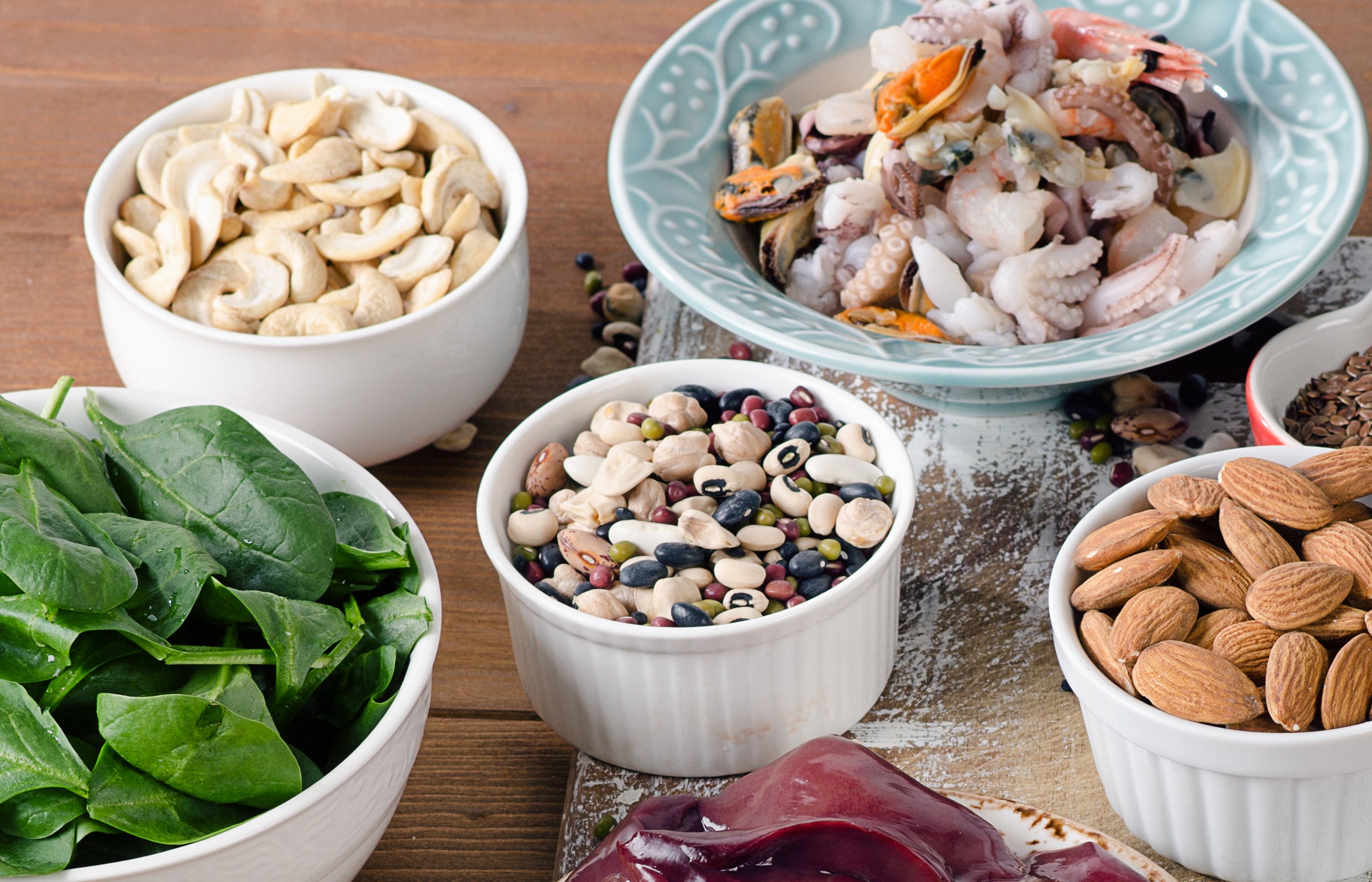Manganese is a trace mineral that is essential to our bodies in small amounts. Because we cannot make it, we must obtain it in food or supplements. Manganese is a coenzyme that assists many enzymes involved in breaking down carbohydrates, proteins, and cholesterol. [1] It also assists enzymes in building bones and keeping the immune and reproductive systems running smoothly. [2] Manganese works with vitamin K to assist in wound healing by clotting the blood.
Manganese is absorbed in the small intestine. Most of the mineral is stored in bone, with smaller amounts in the liver, brain, kidneys, and pancreas. Manganese levels are difficult to measure in the body as dietary intakes do not always correlate with blood levels.
Recommended Amounts
RDA: The Recommended Dietary Allowance (RDA) for adults 19+ years is 2.3 mg a day for men and 1.8 mg for women. For women who are pregnant or lactating, the RDA is 2.0 mg and 2.6 mg, respectively.
UL: The Tolerable Upper Intake Level (UL) for manganese for all adults 19+ years of age and pregnant and lactating women is 11 mg daily; a UL is the maximum daily intake unlikely to cause harmful effects on health.
Manganese and Health
Food Sources
Manganese is found in a wide variety of foods, from shellfish to grains to legumes, and even spices. Drinking water contains small amounts of manganese.
- Shellfish: mussels, oysters, clams
- Nuts, especially hazelnuts and pecans
- Brown rice
- Oatmeal
- Legumes: soybeans, kidney beans, chickpeas, lentils, peanuts
- Black tea
- Black pepper
- Spinach
- Pineapple
Signs of Deficiency and Toxicity
Deficiency
A deficiency of manganese is very rare, and there are no groups of people known to be at risk for developing a deficiency. Therefore, symptoms showing a deficiency have not been clearly established. The absorption of manganese may decrease if eaten with iron-rich foods, as these minerals compete for the same proteins that help with their absorption in the intestines.
Toxicity
There are no reports of reaching toxic levels of manganese from the diet. However, there have been isolated case reports of toxicity shown in people who drank water contaminated with unusually high levels of manganese and in industrial mining and welding workers who inhaled excess amounts of manganese in dust. [2] Because iron and manganese rely on the same proteins that help with their absorption, having low iron stores (e.g., anemia) can increase manganese absorption and heighten a toxicity if excess manganese is present.
A manganese toxicity targets the central nervous system. Symptoms include:
- Tremors
- Muscle spasms
- Decreased hand-eye coordination
- Decreased balance
- Hearing loss
- Headaches
- Depression, mood changes
Did You Know?
- The main food sources of manganese in the U.S. diet are tea, vegetables, and whole grains.
- Manganese is a component of an antioxidant called superoxide dismutase (SOD), which can protect against cell damage caused by free radical molecules. SOD is an enzyme that breaks down the free radical superoxide into smaller, less harmful molecules.
Related
Last reviewed March 2023
Terms of Use
The contents of this website are for educational purposes and are not intended to offer personal medical advice. You should seek the advice of your physician or other qualified health provider with any questions you may have regarding a medical condition. Never disregard professional medical advice or delay in seeking it because of something you have read on this website. The Nutrition Source does not recommend or endorse any products.
